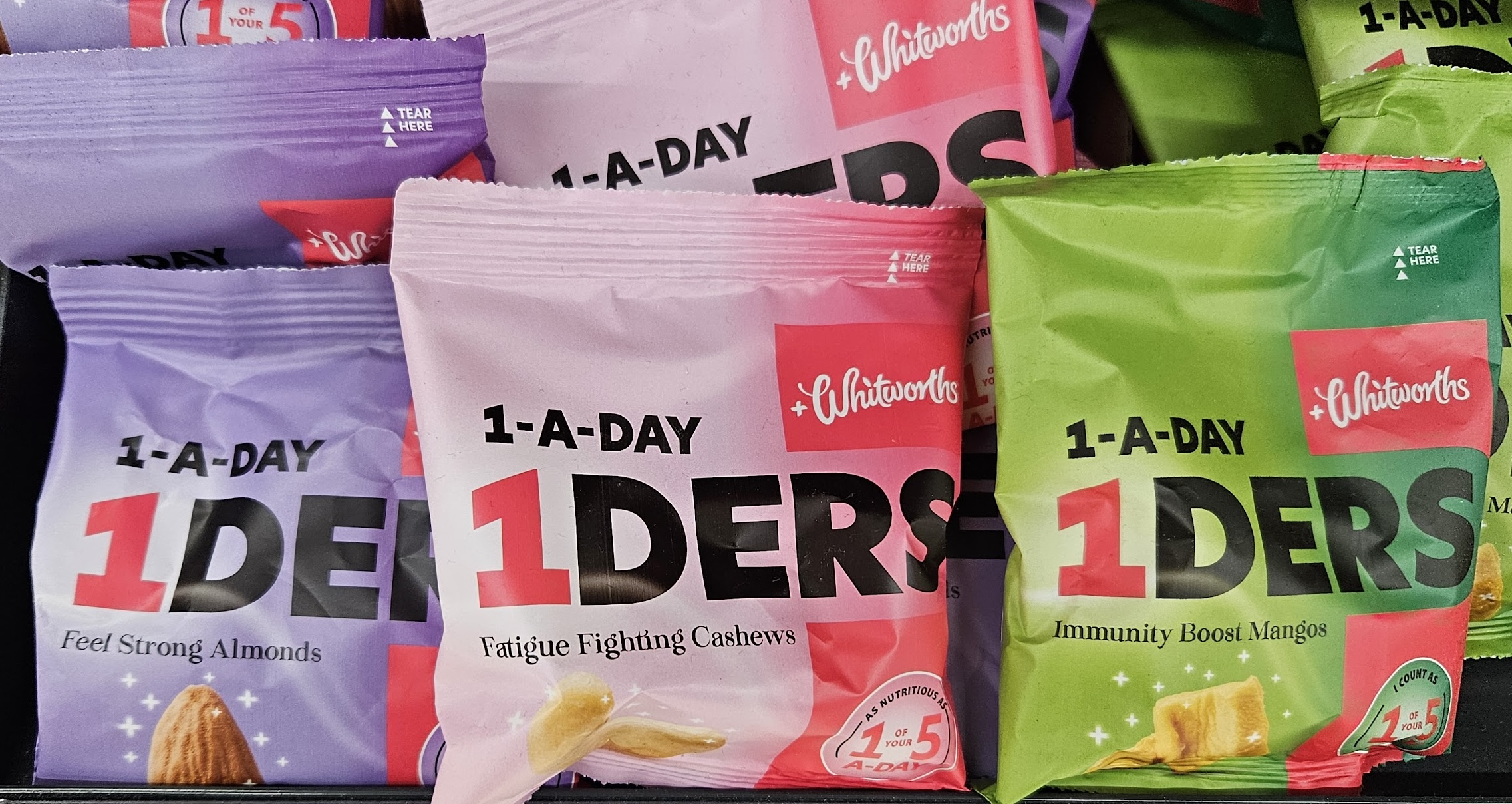Fatigue-fighting cashews and almonds for strength – those are two of the SKUs found in the latest range launched by major UK nuts & dried fruit manufacturer Whitworths.
Named 1ders (pronouncer “wonders”), the range features eight SKUs of dried fruit or nuts individually packaged in 30g bags intended to be consumed every day. The brand references the magnesium in almonds to promote it for strength, the copper in cashews to promote it on an energy platform and the potassium in apricots to enable messaging around brain health. Other SKUs include mango (for immunity), walnuts (for heart health) and prunes (for gut health).
The range is promoted as “Your Mon-Fri nutritional rescue” and the brand claims that it has “more nutrient power than fresh fruit and veg”. Meanwhile, Whitworths says that it is “the only brand that gives a credibly nutritious boost to breakfast, lunch, dinner, snacks, baking and beyond.”

One of most important things in functional food and drink is that there’s a logical fit between the ingredient, product type and benefit platform. This is where 1ders may run into some problems. Not many mass market consumers know that copper is good for energy metabolism, or that cashews are a source of copper. There are other, more well-established ingredients and nutrients that consumers would instinctively choose if they wanted an energy boost. The same can be said for almonds and magnesium.
However, it should be said that the products are affordably priced compared to competitors, and the company did see significant growth in both profit and sales last year. It remains to be seen if 1ders can contribute to a continuation of that.

